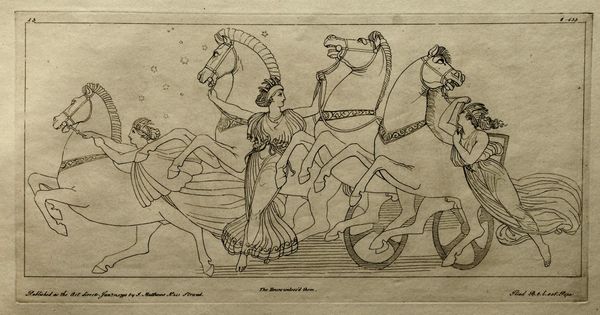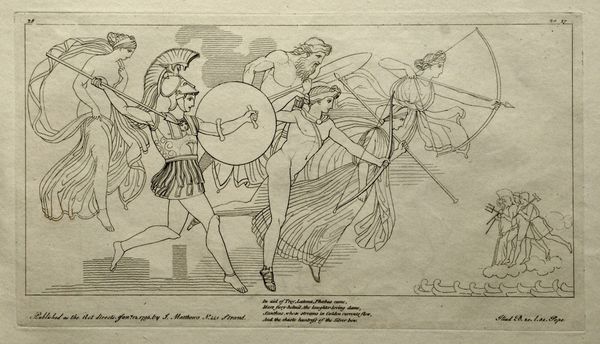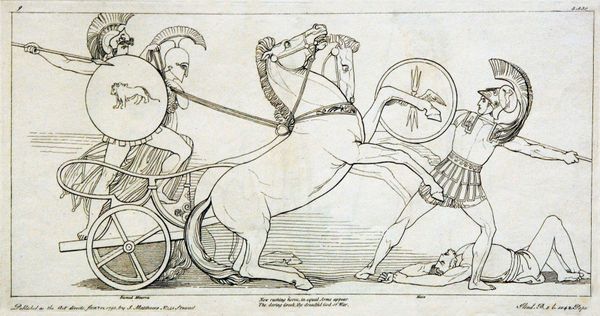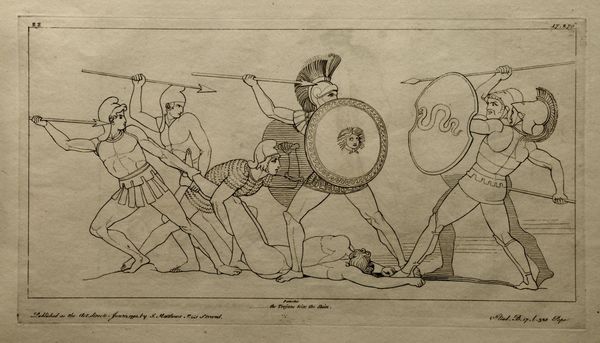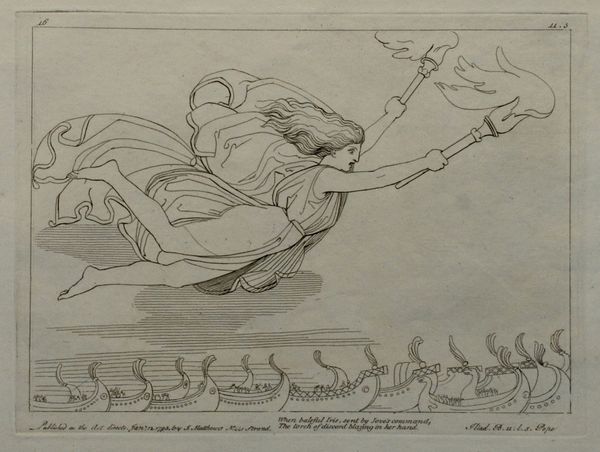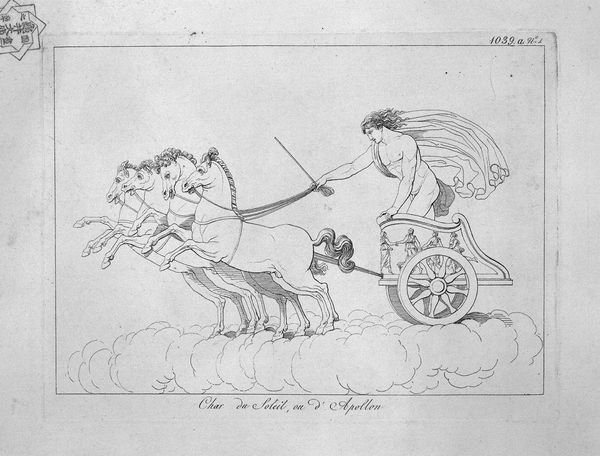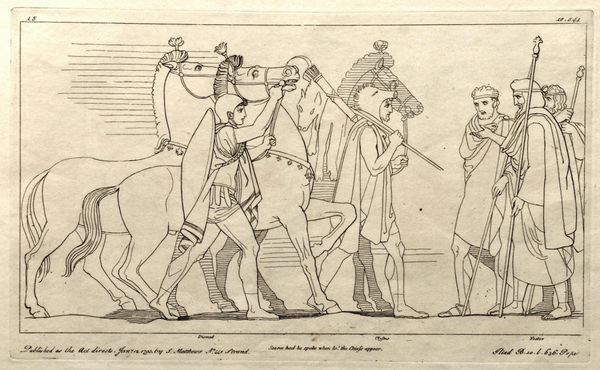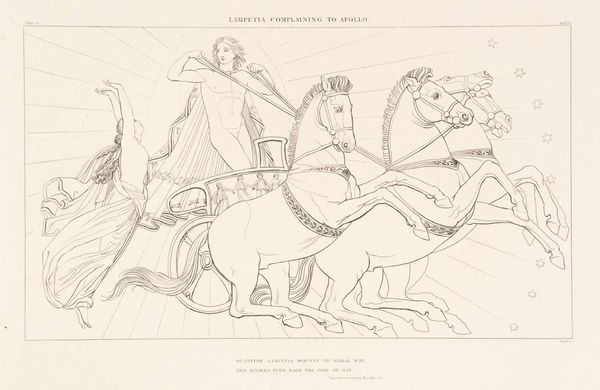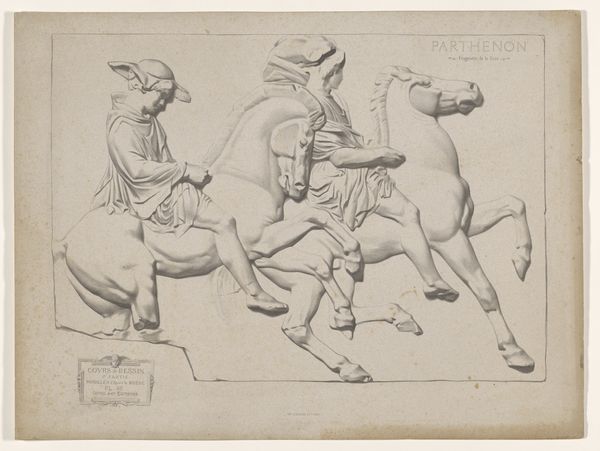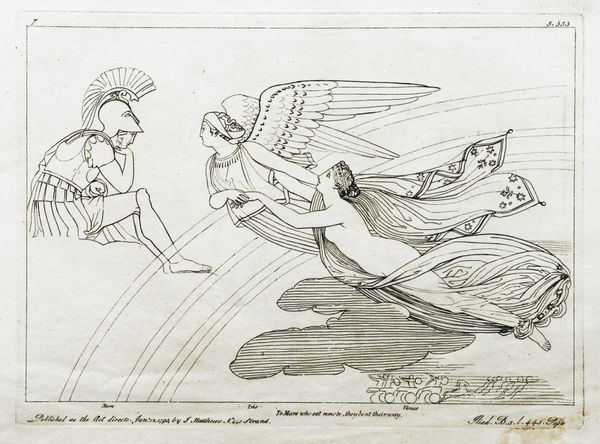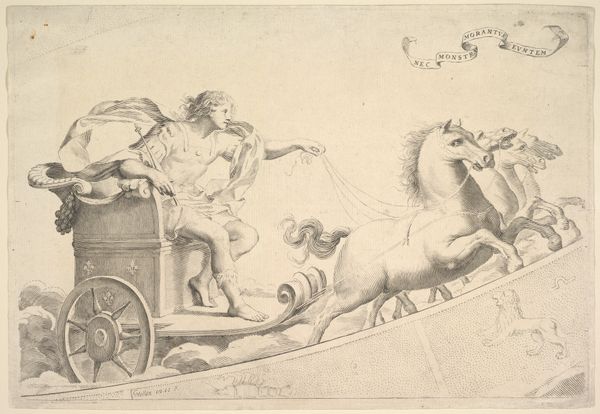
drawing, ink, engraving
#
drawing
#
neoclacissism
#
narrative-art
#
figuration
#
ink
#
line
#
history-painting
#
engraving
Copyright: Public domain
Curator: What strikes me first about this engraving by John Flaxman, titled "Illustration to the Iliad" and created in 1795, is its incredible linearity. Editor: I find it ethereal, almost dreamlike. The figures seem to float rather than move, and the lack of heavy shading adds to that lightness. There’s an almost chaste quality to the scene. Curator: Absolutely. Flaxman masterfully employs line as both structure and suggestion, very evocative. Consider how he uses parallel lines to define the musculature of the horses and the drapery of the figures. This reinforces the work's Neoclassical spirit by simplifying and idealizing forms to emphasize classical purity. Editor: This work carries the potent symbolism of Homer’s Iliad and that era's rediscovery of ancient Greece. We have gods and chariots—timeless visual shorthand for heroism and the divine. It recalls the Roman interpretations of Hellenistic sculptures but flattens and distills the figures. Curator: A very keen observation. Flaxman’s strategic use of white space pushes all of these representational components forward. Look at the precise articulation of the chariot, positioned near the margins of the work, drawing our gaze through each figure, grounding our spatial awareness. Editor: And in contrast, notice how the dancing figures appear less earthly, almost celestial, thanks to their positioning among the stars. Stars in classical iconography represented the divine and immortal nature of heroes or gods. This evokes cultural memories of mythic narratives in the viewer’s mind. Curator: Precisely. The composition invites a dynamic reading. But I would stress the structural rigor within. Flaxman avoids excessive ornamentation to retain thematic clarity. Editor: Overall, the emotional effect is intriguing: restrained yet expressive. Its delicate line work is less about bombastic narratives of war, as often found when visualizing Homer, but a gentler expression of timeless values and moral tales. Curator: An enlightening approach. Considering both Flaxman’s craftsmanship and the engraving's conceptual density leaves me with an enhanced appreciation of how form and content perfectly coalesce in "Illustration to the Iliad". Editor: Yes, Flaxman's minimalist aesthetic is an important historical reference, underscoring a refined moment of looking back to classical traditions and how that visual vocabulary informed future creative pursuits.
Comments
No comments
Be the first to comment and join the conversation on the ultimate creative platform.

